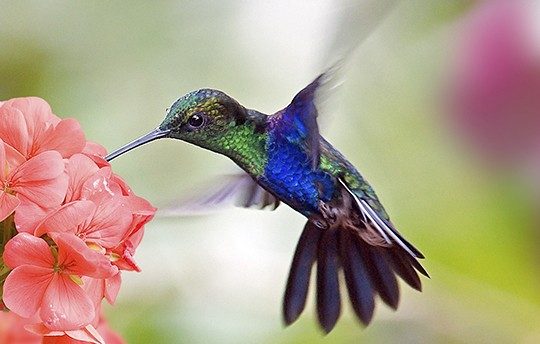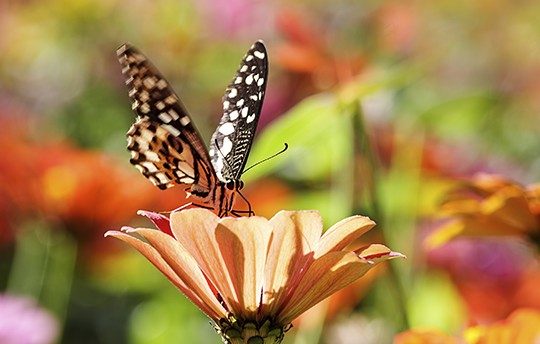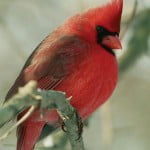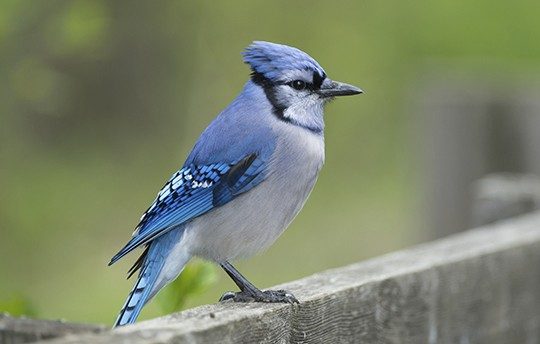 Here at Wright’s Feeds ‘N Needs, we now carry Bragg’s Bird Feed, a local supplier from nearby Bowmanville, as well as Jones Feed Mill’s deer feed range.
Here at Wright’s Feeds ‘N Needs, we now carry Bragg’s Bird Feed, a local supplier from nearby Bowmanville, as well as Jones Feed Mill’s deer feed range.
 We offer bulk bags and smaller packages of Bragg’s Premium Wild Bird Seed, plus sunflower seeds, nyjer seed, safflower seed, peanuts (in and out of the shell), suet and suet cages.
We offer bulk bags and smaller packages of Bragg’s Premium Wild Bird Seed, plus sunflower seeds, nyjer seed, safflower seed, peanuts (in and out of the shell), suet and suet cages.
 Looking for that perfect bird feeder or hummingbird/oriole feeder for your backyard, patio or deck? Come see all the varieties of bird feeders for your backyard feathered friends.
Looking for that perfect bird feeder or hummingbird/oriole feeder for your backyard, patio or deck? Come see all the varieties of bird feeders for your backyard feathered friends.
 We are proud to feed our local wildlife that gives enjoyment to our customers as they watch the wildlife in their own backyards.
We are proud to feed our local wildlife that gives enjoyment to our customers as they watch the wildlife in their own backyards.
BACKYARD BIRDS & FEEDERS:
Birdfeeders: You can attract different types of birds to the yard by offering different mixes of seeds:
- Black oil sunflower seed. Black oil sunflower seed is the universal bird food in my opinion. More birds seem to like it and go out of their way for it than any other single type of bird food.
- Finch Blend. I love wild finches. They are small, colourful much of the year and active beyond belief! Finches prefer a mix of pure white millet, Red millet and canary seed plus Nyjer and sunflower hearts.
- Songbird Blend. This should be a combination of shelled peanuts, red millet, black oil and striped sunflower, cracked corn, White Millet, Red Millet, canary seed and unhulled sunflower seed.
Blue Jays – love peanuts in the shell. No sooner do I have the peanuts out there and they are calling one another to get over to Mark’s place – there is a feast in the making!! And in they fly. Be sure NOT to use the peanuts in the shell that you buy for human consumption! Avoid anything that has salt on it.
With a little planning of your flower garden and investment in quality, Canadian produced bird seed blends; you can keep the wild birds coming to your yard year round! Just the right types of wildlife for most any gardener! Hummingbird feeders should provide easy access to the feeding station, a perch and most important –the ‘nectar’ that you put out for them should be refreshed each week. Otherwise the sugary liquid may go rancid. Place in an open area near a water source.
HOW TO BIRDSCAPE YOUR BACKYARD:
 HOW TO CHOOSE BIRD SEED:
HOW TO CHOOSE BIRD SEED:
HOW TO CHOOSE A BIRD FEEDER:
HOW TO CLEAN YOUR BIRD FEEDER:
 Goldfinches are a colourful sight, especially when they don their summer bright yellow feathers.
Goldfinches are a colourful sight, especially when they don their summer bright yellow feathers.
We carry their favourite food — Nyjer Seed — to keep them returning to your feeder time and again and keep you enjoying their colourful and playful ways.
DEER & OTHER WILDLIFE:
 Spotting a lone deer grazing on your property brings delight and if you are lucky enough, you’ll get to watch a family of deer bring out their fawns as well. For those who enjoy seeing deer graze on their property, Jones Feed Mill’s Deer feed is formulated in two blends with molasses and with low molasses, giving the deer the best nutrition based on the season. Provide deer feed in the fall and winter months when there is less access to food for deer in the wild.
Spotting a lone deer grazing on your property brings delight and if you are lucky enough, you’ll get to watch a family of deer bring out their fawns as well. For those who enjoy seeing deer graze on their property, Jones Feed Mill’s Deer feed is formulated in two blends with molasses and with low molasses, giving the deer the best nutrition based on the season. Provide deer feed in the fall and winter months when there is less access to food for deer in the wild.
In addition to Jones Feed Deer Mix, we stock whole corn, grains, deer & salt blocks.
 To create your own deer food plot on your property, we stock Nature’s Choice Wildlife Mixture for either spring or late-summer planting — This product is sold by the pound or by the 10 kg. bag — Recommended seeding rate is 10 kg. per acre. Here’s a link to the technical data sheet for more information, the mixture’s composition and seeding and fertilizing recommendations — Nature’s Choice Wildlife Mixture — Technical Sheet
To create your own deer food plot on your property, we stock Nature’s Choice Wildlife Mixture for either spring or late-summer planting — This product is sold by the pound or by the 10 kg. bag — Recommended seeding rate is 10 kg. per acre. Here’s a link to the technical data sheet for more information, the mixture’s composition and seeding and fertilizing recommendations — Nature’s Choice Wildlife Mixture — Technical Sheet
 We also have an apple-flavoured, molasses-based Sweetlix ‘Rack’ Deer Block that you can set out for the deer to supplement their diet. Deer lovers also like to set out blue salt blocks in their backyard or forested area to entice the deer to visit.
We also have an apple-flavoured, molasses-based Sweetlix ‘Rack’ Deer Block that you can set out for the deer to supplement their diet. Deer lovers also like to set out blue salt blocks in their backyard or forested area to entice the deer to visit.
HOW TO MAKE A GRAVITY-FEED DEER FEEDER:
 Putting out peanuts for your local squirrel will help to keep them from sifting through your bird seed mix to get at their favourite treat. We carry peanuts, in or out of the shell, in bulk bags or feeder-sized bags.
Putting out peanuts for your local squirrel will help to keep them from sifting through your bird seed mix to get at their favourite treat. We carry peanuts, in or out of the shell, in bulk bags or feeder-sized bags.
If squirrel, raccoons, skunks or other pesky wildlife are giving you grief, HAVAHART Live Traps could be the answer to your problems.
LIVE ANIMAL TRAPPING with HAVAHART TRAPS:
BIRD STUDIES CANADA
Enhance Your Winter Bird Feeding Experience with Project FeederWatch — Submit observations from your backyard!
If you feed birds in your yard, your hobby can support bird research and conservation. By joining Project FeederWatch and sharing information about the birds visiting your feeders between November and April, you can help scientists at Bird Studies Canada and the Cornell Lab of Ornithology track changes in bird numbers and movements.
The 31st season of Project FeederWatch runs from early November until early April. Taking part is easy! Just count the numbers and kinds of birds at your feeders, and enter the information on the FeederWatch website.
Attracting Hummingbirds & Butterflies – by Mark Cullen
As you prepare your shopping list for the garden centre this year include plants which will attract wildlife to your garden. I am talking about the kind of wildlife that Canadians really WANT in their yard…. like butterflies, song birds and hummingbirds. The secret to attracting song birds, hummingbirds and butterflies to your garden is providing their favourite food and nectar-laden flowers in a sheltered, warm and sunny location. Plant material plays a large role in attracting butterflies and hummingbirds (and song birds too!). Your choice of plants should include lots of native species, if you want to maximize the value of them as ‘magnets’ to butterflies and hummingbirds. Native plants that work:
- Echinacea purpurea (Purple Coneflower)
- Rudebeckia hirta (Black Eyed Susan)
- Yarrow
- perennial Salvia
- liatrus (shooting star)
 Hummingbirds are migratory. They pass through our gardens once in spring and again in late summer / early fall. Have a hummingbird feeder set up near your kitchen window so that you can see them easily from the indoors. Hummingbirds are attracted by visual cues. Look for bright-coloured red or orange perennials and annuals with ‘trumpet’ shaped flowers for the hummingbirds. Bright, trumpet-shaped flowers include:
Hummingbirds are migratory. They pass through our gardens once in spring and again in late summer / early fall. Have a hummingbird feeder set up near your kitchen window so that you can see them easily from the indoors. Hummingbirds are attracted by visual cues. Look for bright-coloured red or orange perennials and annuals with ‘trumpet’ shaped flowers for the hummingbirds. Bright, trumpet-shaped flowers include:
- Coral bells
- Monarda (Bee Balm)
- Trumpet vine
- Honeysuckle (both the hardy shrub and the vine)
- Salvia
- Foxglove
- Lupines
- Hibiscus (the tropical varieties, the hardy perennial and the ‘rose of Sharon’ woody shrub)
- Lavatera (annual)
- Rose mallow (annual)
- Hollyhock (biennial)
- Delphinium
- All hostas
- Daylilies
- Fuchsia (annual)
- Nicotiana (annual)
While hummingbirds are attracted to your garden visually, they will stay longer if the flowers used to attract them in the first place have a sweet fragrance. They are, after all, looking for nectar to feed on. Feed your flowering plants with Plant-Prod® Flowering Plant Fertilizer 15-30-15. This formulation should be used from the early stages of flower bud development through flowering when demand for phosphorous is high in the plant.
 Butterflies are attracted to your garden by scents in the first place. Flat, bold faced flowers are attractive to butterflies because they are easy to perch on. ‘Flat flowering’ plants that provide a nectar rich platform from which butterflies will feed include:
Butterflies are attracted to your garden by scents in the first place. Flat, bold faced flowers are attractive to butterflies because they are easy to perch on. ‘Flat flowering’ plants that provide a nectar rich platform from which butterflies will feed include:
- Shasta daisy
- Queen Anne’s lace
- Butterfly Bush (Buddleia)
- Rudebeckia
- Asters (perennial and annual)
- Echinacea (Purple Coneflower)
- Liatris (Blazing Star)
- Speedwell
- Butterfly weed, and many others.
Plant lots of trees for nesting and protection for the birds, including hummingbirds. Use a mixture of deciduous and evergreen trees as both provide protection, food sources and shelter. Bright sunshine is favoured by most butterflies and hummingbirds in fine weather, but trees provide protection from wind and severe weather. Place lots of still water around the yard for drinking. Butterflies prefer drinking from shallow water. Bird baths work well. Empty them weekly to avoid mosquito breeding. Songbirds are attracted to plants that produce a seed head, for the most part. Their food preference is seeds: which is why we use a select, clean combination of seeds to attract them to our birdfeeders. Plants that attract songbirds later in summer and into the autumn, when the seed heads develop, include Beebalm, Echinacea [Coneflower], Globe Thistle, Sweet William and many ornamental grasses.


 We offer bulk bags and smaller packages of Bragg’s Premium Wild Bird Seed, plus sunflower seeds, nyjer seed, safflower seed, peanuts (in and out of the shell), suet and suet cages.
We offer bulk bags and smaller packages of Bragg’s Premium Wild Bird Seed, plus sunflower seeds, nyjer seed, safflower seed, peanuts (in and out of the shell), suet and suet cages. Looking for that perfect bird feeder or hummingbird/oriole feeder for your backyard, patio or deck? Come see all the varieties of bird feeders for your backyard feathered friends.
Looking for that perfect bird feeder or hummingbird/oriole feeder for your backyard, patio or deck? Come see all the varieties of bird feeders for your backyard feathered friends.  We are proud to feed our local wildlife that gives enjoyment to our customers as they watch the wildlife in their own backyards.
We are proud to feed our local wildlife that gives enjoyment to our customers as they watch the wildlife in their own backyards.
 HOW TO CHOOSE BIRD SEED:
HOW TO CHOOSE BIRD SEED: Goldfinches are a colourful sight, especially when they don their summer bright yellow feathers.
Goldfinches are a colourful sight, especially when they don their summer bright yellow feathers.

 We also have an apple-flavoured, molasses-based Sweetlix ‘Rack’ Deer Block that you can set out for the deer to supplement their diet. Deer lovers also like to set out blue salt blocks in their backyard or forested area to entice the deer to
We also have an apple-flavoured, molasses-based Sweetlix ‘Rack’ Deer Block that you can set out for the deer to supplement their diet. Deer lovers also like to set out blue salt blocks in their backyard or forested area to entice the deer to  Putting out peanuts for your local squirrel will help to keep them from sifting
Putting out peanuts for your local squirrel will help to keep them from sifting  Summertime brings back the beautiful hummingbird to sip from your feeder.
Summertime brings back the beautiful hummingbird to sip from your feeder.